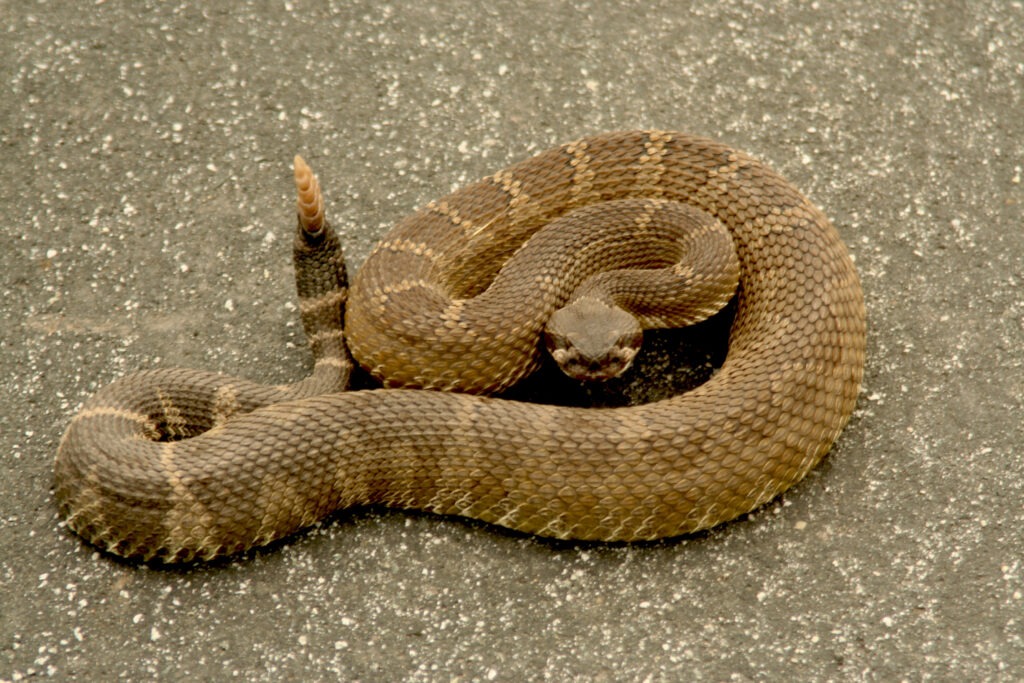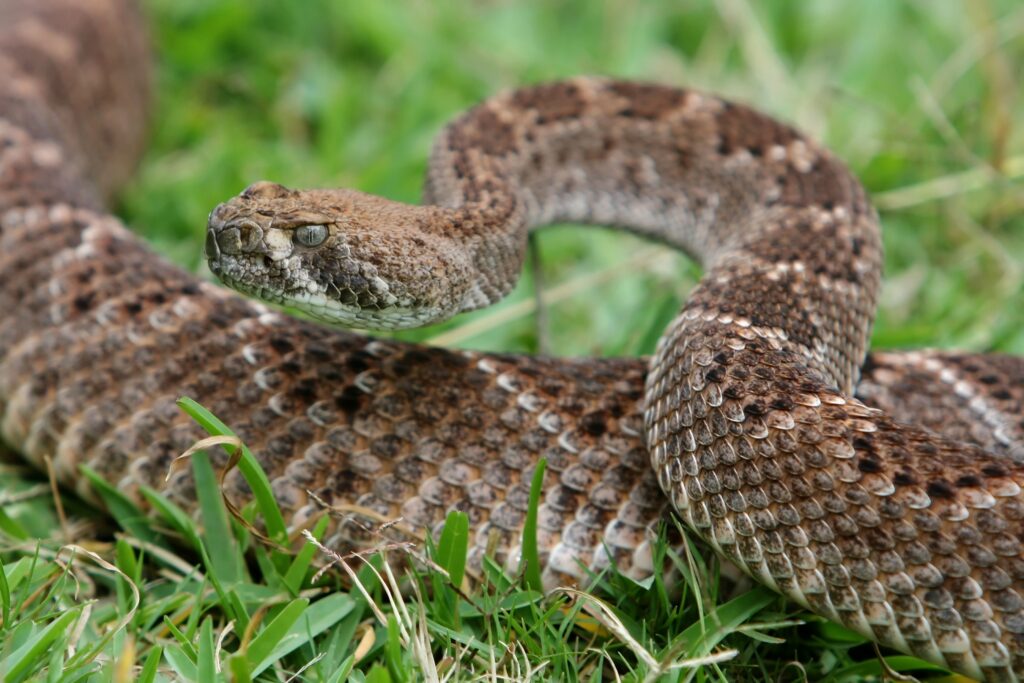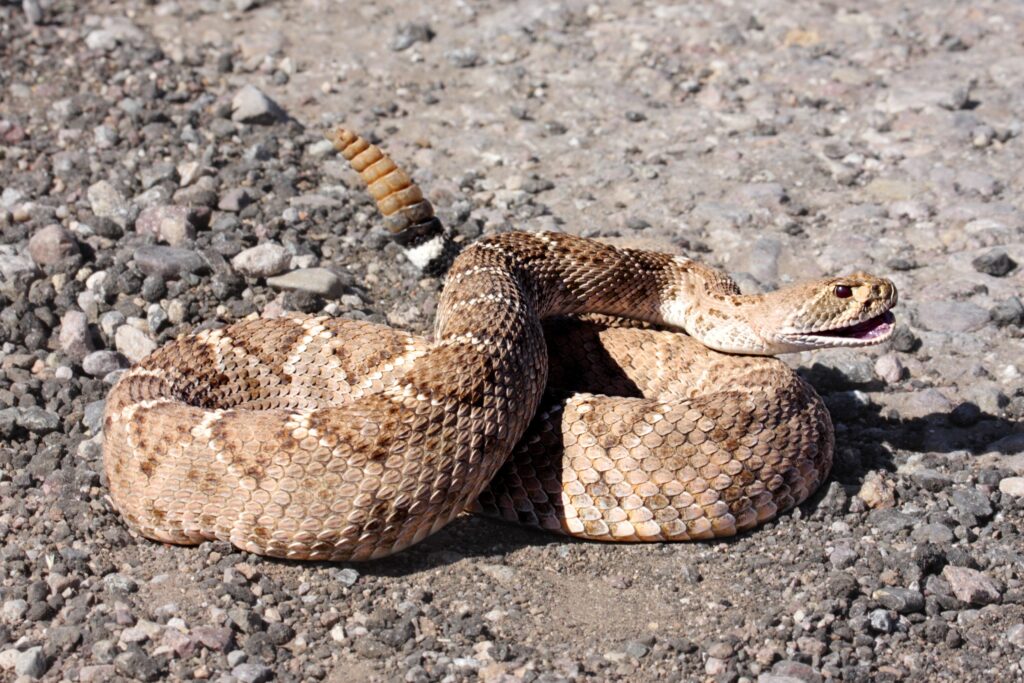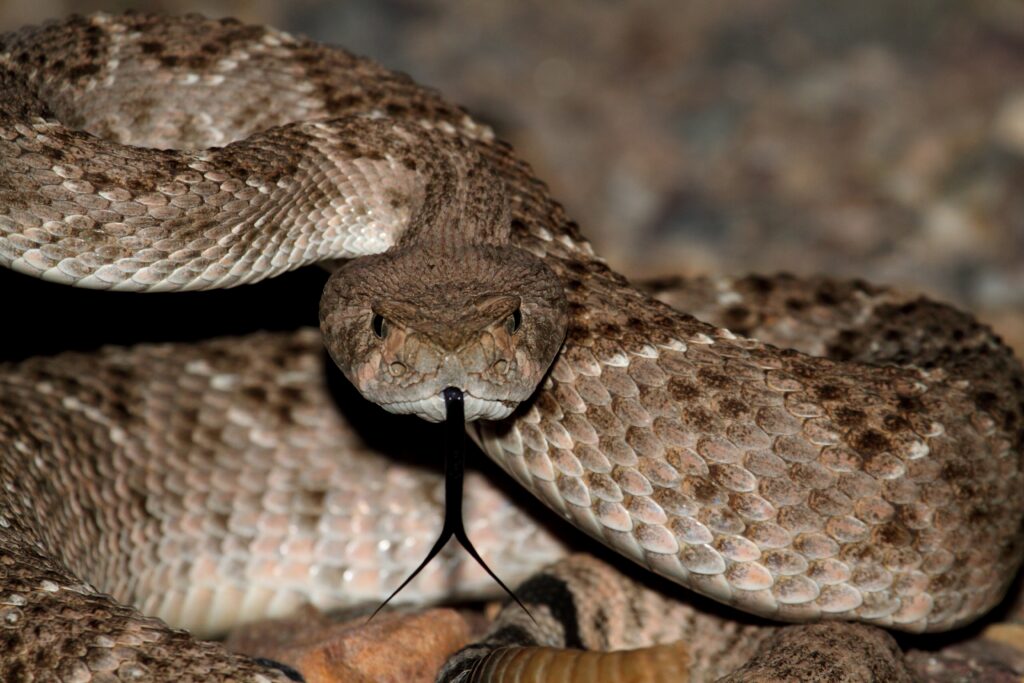
During certain parts of the year, rattlesnakes are believed to be more dangerous than at other times. While one should always be cautious of snakes in the wild, many are left wondering what time of year are rattlesnakes most aggressive?
Here’s what I’ve learned:
Rattlesnakes are not more aggressive during specific times of the year. Although assumed to be aggressive, rattlesnakes are more defensive creatures and will only act out if they feel vulnerable or are provoked. Some situations may make a rattlesnake feel more vulnerable or provoked than others.
While rattlesnakes do not usually act aggressively toward humans, it is understandable for hikers to feel nervous about encountering these creatures.
However, once you know more about the typical behavior of a rattlesnake and why it may react the way it does you can feel more at ease while you explore nature.
Keep reading to learn more about situations that can make a rattlesnake react “aggressively” and what to do if you have an encounter with a rattlesnake!
Rattlesnake Behavior and Activity

The media has continually portrayed rattlesnakes as cold-blooded killers that strike every moving object around them. However, this fictional representation is far from the reality of these snakes’ standard behavior patterns. Rattlesnakes generally only act aggressively towards their prey.
When rattlesnakes and humans encounter each other, the snake is more likely to act in defense of itself.
Rattlesnake venom can take around three to five days to fully replenish after use according to the Colorado River Indian Tribe Fish and Game. Because rattlesnakes rely on their venom for hunting, they are not likely to just use their venom at random; rather, they will attempt to flee from predators and will only strike if they feel threatened.
If you do not provoke or corner a snake, chances are you can walk right past the snake or around them without incident.
Although rattlesnakes are not typically aggressive, several situations could cause a snake to act more defensively than others. We will cover what those situations are in the next section.
While the time of year does not necessarily affect how aggressive a rattlesnake is, it can affect how likely you are to encounter a snake.
Rattlesnakes are cold-blooded creatures and therefore rely on the sunshine to warm their bodies. You are more likely to encounter a rattlesnake basking in the sun when the weather is 70 degrees Fahrenheit (or warmer) and sunny.
Rumor has it that rattlesnakes are more aggressive during the Spring and Summer; however, this statement is not true.
These warmer months are merely when rattlesnakes are more likely to leave their dens. Rather than acting more aggressively during this time of year, rattlesnake sightings are simply more common.
Rattlesnake encounters are less likely to occur during the colder, wintery months of the year. Rattlesnakes enter hibernation once the weather is consistently below 60 degrees Fahrenheit. They will not re-emerge from their dens until the weather is consistently above these same temperatures.
When this time of year occurs for you will vary greatly on where you are located in the world. For those in the southern United States where weather is warmer all year long, rattlesnakes may not actually hibernate. Rather, snakes in these areas will have periods of inactivity.
This period of inactivity, also referred to as brumation, allows snakes to build up energy and prepare for the upcoming mating and reproductive season. Rattlesnakes generally brumate from November or December until February or March.
Once rattlesnakes emerge from hibernation or brumation they enter what is called “egress.”
During this time, rattlesnakes remain near their dens or spend their time searching for a mate. In some instances, you may even see rattlesnakes “hanging out” in groups. If you encounter a snake during this time, or a group of snakes for that matter, stop moving and slowly back away.
The snakes will prefer to save their energy for mating rather than spend it on chasing you.
What Can Make a Rattlesnake Defensive Against People?

Now that we know more about when snakes are active throughout the year, we can take a closer look at what situations may cause rattlesnakes to act defensively against humans.
After hibernation and egress, rattlesnakes begin to seek out their first meals of the season. This generally takes place around the end of March and throughout April. Like other snakes, rattlesnakes prefer to eat fewer large meals instead of frequent small meals.
Typically speaking, if a snake can escape a predator it will do so; however, a rattlesnake may not always have the ability to flee. After eating a large meal, rattlesnakes will be weighed down and experience limited mobility.
Unable to flee, rattlesnakes may feel more vulnerable and might react defensively toward any humans that stumble upon them.
Although this will be more common during rattlesnakes’ first meals of the season, it occurs each time they eat a large meal.
When you see a rattlesnake that appears to have just eaten, give it plenty of room and time to get away from you. Another situation that may make rattlesnakes react more aggressively towards passers-by is when they are shedding their skin.
Shedding Skin
Snakes can shed their skin several times per year.
The frequency that a snake sheds does not coincide with age; rather, how often a rattlesnake sheds its skin depends on the availability of food. Rattlesnakes in areas with plenty of prey will need to shed their skin more often than those who must work harder to find food. Additionally, younger snakes shed their skin more frequently than older snakes.
A juvenile rattlesnake may shed its skin once a month while an adult rattlesnake will likely only shed twice a year.
Before a snake sheds its skin, a layer of lubricating fluid builds up between the new layer and the old layer. For a few days, this fluid even covers the snake’s eyes. This fluid will cause their eyes to appear slightly blue and will impact their vision.
If you stumble upon a blue-eyed snake’s hiding place be sure to back away slowly.
With impaired vision, the rattlesnake cannot distinguish you from any other predator that may attack them. Getting too close to one of these snakes will cause it to react defensively. However, the snake should give you plenty of warning to back away by shaking its rattle before striking. Once the snake sheds its skin, its vision will return to normal and the snake will go about its normal day-to-day activities.
Giving Birth
Earlier, we discussed that rattlesnakes prepare for reproduction during hibernation and find their mates during egress.
Unlike most other reptiles, rattlesnakes birth live young instead of laying eggs. Without the protection of a shell, rattlesnake mothers take extra caution in protecting their young. After six to seven months of gestation (around September and October), the mother rattlesnake seeks out a quiet, secluded place to give birth to her young.
Because mothers give birth to their young in extremely remote areas, the chances of interrupting a rattlesnake birth are little to none. Rattlesnake mothers stay with their young until their first sheds and can be especially protective during this time. Like any other wild animal, you should avoid a mother rattlesnake who is still with her young.
Another thing to keep in mind when encountering young rattlesnakes is that their venom can actually be more dangerous. As well as having more toxic venom, juvenile rattlesnakes are not able to properly regulate how much venom they use. This can result in them using too little venom or too much.
Although juvenile rattlesnakes may inject more venom per bite than their older counterparts, you should be just as cautious around older rattlesnakes. Adult rattlesnakes have larger venom reserves, which ultimately makes them more dangerous than a juvenile.
While many circumstances can make a rattlesnake act more defensively, they are not aggressive creatures. When hiking and exploring in rattlesnake country always be cautious. Do not purposefully approach a rattlesnake. So long as a snake does not feel provoked, you will likely enjoy your time outdoors without even knowing they are nearby.
Rattlesnake Encounters: What to Do

While rattlesnake encounters sound like a common and frightening experience, they do not have to be. If you know what to do after encountering a rattlesnake, both you and the snake can leave the situation unscathed.
Before you know what to do while facing a rattlesnake, you should first know how to protect yourself while adventuring in rattlesnake country. Although it may sound tempting to wear shorts and sandals while exploring in the warmer weather, you should wear closed-toe shoes and long, loose-fitting pants.
Do not stray from the path, especially into areas with lots of tall grass and underbrush for snakes to hide under.
When picking things up or sitting on the ground, survey the area thoroughly for snakes. Always roll firewood toward yourself before picking it up. If a snake is hiding under the log or brush this gives it the chance to get away rather than forcing it to defend itself.
The feature that makes the rattlesnake most unique is its rattler located at the end of the tail.
Each time the skin sheds the snake receives another notch in its tail. These notches lock together and when the snake moves the muscles in its tail they make a loud rattle sound. Rattlesnakes make this sound to warn predators or other potential threats that they are getting too close.
Unfortunately, rattlesnakes may not always warn someone who startles them. Some snakes may have broken rattles and will not be able to warn you of their presence. Do not solely rely on the sound of a rattle to warn you of a nearby rattlesnake. Pay attention and be alert to your surroundings at all times.
Learn other ways to avoid negative encounters with a rattlesnake from the Forest Service here!
If you have done everything you can to avoid a face-off with a rattlesnake but still find yourself in a situation with a snake, you need to know what to do to avoid getting bitten.
After hearing or seeing a rattlesnake, stop moving. Take a brief moment to identify which direction the sound is coming from or the direction the snake is going. Slowly back away from the snake, the rattlesnake is not likely to chase you.
Do not approach a snake, even if you took action against it and believe it is dead. One rattlesnake head, which had been severed from its body, was still able to bite someone for 90 minutes after decapitation!
This occurs because the slower metabolism of snakes keeps their internal organs functioning for quite some time, even after death.
Keep your distance from rattlesnakes even if they appear to be dead. If you are bit by a snake during your encounter, do not panic. Although the venom will start to take effect immediately, you have plenty of time to get proper medical attention.
Immediately call 911 and get to a safe location. Do not stay near the snake as it could potentially bite you again or someone else in your group.
When possible, have the other members of your group carry you to a safe location. Movement such as walking could increase your heart rate and spread the venom through your bloodstream faster. Remain still and calm until help arrives.
Do not clean the bite or attempt to stop it from bleeding. Place a bandage over the wound and wait for medical professionals to take over. Learn more about treating a rattlesnake bite from Healthline.
However, if you are bit by a rattlesnake there is no need to panic.
According to the United States Center for Disease Control, around 8,000 Americans are bit by venomous snakes each year. While thousands of bites occur each year, as few as five people die from their injuries annually.
Do not wait to seek medical attention after being bit by a rattlesnake. An untreated bite could cause permanent damage, such as loss of mobility, within two to three days. An untreated rattlesnake bite can also result in organ failure or death.
